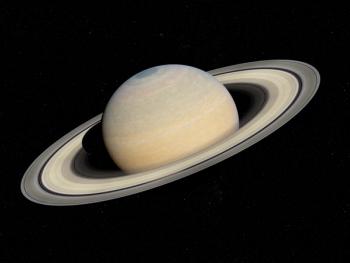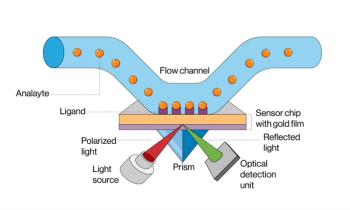Key Points
- Seven spectroscopy techniques, including vis-to-MIR reflectance and Raman, were used to analyze CM2 meteorite NWA 12184.
- Spectroscopy identified native minerals like phyllosilicates and olivine, distinguishing them from terrestrial weathering products.
- Ion irradiation and spectroscopic monitoring showed spectral darkening, reddening, and hydration band shifts due to surface amorphization.
- Spectroscopic findings align with Ryugu asteroid data, enhancing insight into space weathering on C-type asteroids.
Unlocking the Past Through Spectral Signatures
A research team at the INAF-IAPS (Istituto di Astrofisica e Planetologia Spaziali) in Rome, Italy, has employed a suite of advanced spectroscopic techniques to analyze the CM2 carbonaceous chondrite known as Northwest Africa (NWA) 12184. Their goal: to reveal the native mineralogy of the meteorite, distinguish terrestrial weathering, and understand how solar wind alters the surface of its parent asteroid. The study, published in Meteoritics & Planetary Science, offers new insights into the evolution of C-type asteroids—primitive bodies rich in water and carbon, thought to be among the earliest building blocks of the solar system (1).
Led by A. Galiano, the research team included F. Dirri, M. Ferrari, C. Carli, E. Bruschini, G. Filacchione, G. Piccioni, E. Palomba, S. Stefani, A. Raponi, M. Ciarniello, M. E. Palumbo, C. Scirè Scappuzzo, G. Baratta, R. G. Urso, and L. Inno—all affiliated with INAF-IAPS (1).
A Multispectral Approach to Planetary Science
The researchers applied seven complementary spectroscopic methods at various spatial resolutions, including visible-to-mid-infrared (vis-to-MIR) reflectance and Raman spectroscopy, to fully characterize the NWA 12184 meteorite. These techniques allowed them to analyze both the meteorite’s matrix and embedded chondrules, discerning variations at the millimeter and micrometer scales (1,2).
Reflectance spectroscopy in the vis-NIR range revealed key absorption bands associated with Fe-rich phyllosilicates at ~0.7 µm and a distinct metal-OH hydration feature at ~2.7–2.8 µm (1,2). These features, commonly found in CM2 meteorites, help scientists assess the extent of aqueous alteration—an early solar system process where liquid water chemically altered the rock.
In contrast, the MIR reflectance spectra highlighted the presence and subsequent reduction of olivine features, offering a glimpse into the meteorite’s thermal metamorphism and the effects of space weathering (1,2).
Simulating Solar Wind: Laboratory Insights into Space Weathering
To replicate conditions in space, the team irradiated the meteorite with 200 keV He⁺ ions, mimicking the solar wind bombardment that asteroids endure due to their lack of protective atmospheres or magnetic fields. This experiment produced observable changes in the meteorite’s spectral profile, including darkening, reddening, band weakening, and shifting of key features like the hydration band (1).
These spectral alterations confirm that ion irradiation causes amorphization of surface minerals such as olivine, a process also documented in asteroid samples like those returned from Ryugu by the Hayabusa2 mission. Notably, similar shifts toward longer wavelengths in hydration bands were observed both in the Ryugu samples and in this experiment, strengthening the link between space weathering and spectral evolution (1).
Understanding Ancient Rocks to Decode Asteroids
CM2 chondrites, such as NWA 12184, are composed mainly of Fe-Mg phyllosilicates (like serpentine and cronstedtite), tochilinite, and remnants of anhydrous silicates, with minor components including carbonates, sulfides, magnetite, and Fe-Ni metal. The team’s combined spectroscopic approach successfully identified these native materials as well as secondary products of terrestrial alteration—a crucial distinction for interpreting asteroid sample returns (1).
These findings are particularly important in the context of missions like NASA’s OSIRIS-REx and JAXA’s Hayabusa2, which return pristine material from C-complex asteroids. By better understanding the spectral fingerprints of meteorites altered by space weathering or Earth’s environment, scientists can more accurately decode the histories of asteroids and the role water played in the early solar system (1,3).
References
(1) Galiano, A.; Dirri, F.; Ferrari, M.; Carli, C.; Bruschini, E.; Filacchione, G.; Piccioni, G.; Palomba, E.; Stefani, S.; Raponi, A.; Ciarniello, M. VIS‐to‐MIR Reflectance and Raman Spectroscopy of the CM2 NWA 12184 Carbonaceous Chondrite. Meteorit. Planet. Sci. 2025, in press. DOI: 10.1111/maps.14315
(2) Nath, R.; Mali, S.; K, D.; Panwar, N.; Verma, A. J.; Kumar, A.; Mahajan, R. R.; Basu Sarbadhikari, A.; Varela, M. E.; Ehgamberdiev, S. A.; Kapadia, T. Classifying Meteorites with MetNet: A Deep Learning Approach Using Reflectance Spectroscopy. Meteorit. Planet. Sci. 2025, 60 (5), 1063–1072. DOI: 10.1111/maps.14342
(3) Workman, J., Jr. Introduction to Satellite and Aerial Spectral Imaging Systems; Spectroscopy Online, April 28, 2025. https://www.spectroscopyonline.com/view/introduction-to-satellite-and-aerial-spectral-imaging-systems (accessed May 22, 2025).






